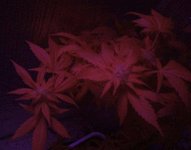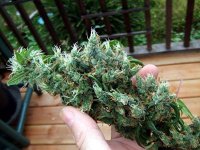knna
Member
AFAIK, pigments and chloroplasts used to capture light from 610 to 680nm are the same. Differences in absortion are due to the higher or lower affinity to each wavelenght. As they are the same light capturing organs and pigments, i doubt using differents red wavelenghts does any difference in absortion. What matter is the total irradiance along the red spectrum. Im talking only about light absorbance/reflectance/transmitance.
Transmision from antenna pigments to the central Photosystem happen in femtoseconds. As pulsing in femtoseconds is way beyong our technical capabilities, i think pulsing will have little impact on absortion, while it has a negative impact on LEDs efficiency (due the on pulse current is higher).
Scientific studies about light pulsing has showed little improvement, and only for short pulses, always below 200microseconds, and generally for about 100microseconds pulses and lower. Other on pulse durations results on reduced photosynthetic efficacy. And for those shorter pulses that may result on a photosynthetic efficacy improvement, is the gain higher than the loss on LED efficiency? For the LEDs on sale currently, not (at least, if we take their nominal current in mind). Maybe on the future...
About alternating pulses of different wavelenghts, its a very interesting concept, but it seems difficult to configure a system to do it on a way very short light pulses gets sincronyzed to not light together.
Transmision from antenna pigments to the central Photosystem happen in femtoseconds. As pulsing in femtoseconds is way beyong our technical capabilities, i think pulsing will have little impact on absortion, while it has a negative impact on LEDs efficiency (due the on pulse current is higher).
Scientific studies about light pulsing has showed little improvement, and only for short pulses, always below 200microseconds, and generally for about 100microseconds pulses and lower. Other on pulse durations results on reduced photosynthetic efficacy. And for those shorter pulses that may result on a photosynthetic efficacy improvement, is the gain higher than the loss on LED efficiency? For the LEDs on sale currently, not (at least, if we take their nominal current in mind). Maybe on the future...
About alternating pulses of different wavelenghts, its a very interesting concept, but it seems difficult to configure a system to do it on a way very short light pulses gets sincronyzed to not light together.








